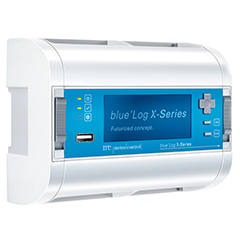Grid integration is a key issue in the expansion of renewable energies throughout Europe. The requirements for power generation plants at all voltage levels have changed significantly with the pan-European harmonisation of grid connection requirements and the resulting adaptations to the national foundations. The aim of the EU regulation is to create a stable electricity grid throughout Europe in order to further increase the share of renewable energies with respect to climate goals.
‘We are glad to have found a competent and very experienced partner for power plant control
in meteocontrol.’
These new regulations close the gap, particularly in the area of verification, which previously presented a grey area at the project level: manufacturers attested themselves with a manufacturer’s declaration that ensured that their power plant controllers fulfilled the necessary requirements. Project-specific uncertainties during commissioning were the result. With the new network code throughout Europe a new step has been made.
Creating a solar power plant in the three-digit megawatt range such as Midden-Groningen with feed-in at the high voltage level is a challenge that is unparalleled in its complexity and scope. The requirements for power plant control, especially for voltage and reactive power control, were high and the verification process to ensure grid code compliance was comprehensive.
With the pan-European harmonisation of grid connection conditions in accordance with EU Regulation 2016/631 Requirements for Generators (RfG) and the national implementations, the requirements for grid integration of renewable generation plants have increased. Even though both the technical requirements and the compliance verification procedure were already at a very high level in the grid area of the Dutch transmission system operator TenneT TSO B.V.




























